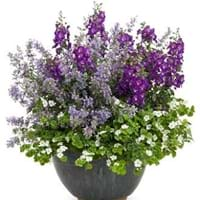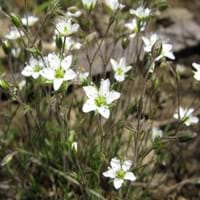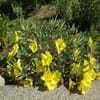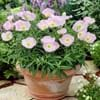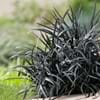Life Span
Perennial
Annual and Perennial
Origin
Turkey, Iran, Western Asia
Europe, Northern Europe, Western Europe, United Kingdom
Types
Apple Mint, Basil Mint, Ginger Mint
M. v. brevipetala
M. v. collina
M. v. frozen
M. v. grandiflora
M. v. paui
M. v. verna
M. v. japonica
Habitat
Banks, Near organic waste disposal, Roadsides, Stream side
gardens, Grassland, Prairies, Suburban areas, Tropical regions
USDA Hardiness Zone
4-8
4-7
Sunset Zone
A3, 1a, 1b, 2a, 2b, 3a, 3b, 4, 5, 6, 7, 8, 9, 10, 11, 12, 13, 14, 15, 16, 17, 18, 19, 20, 21, 22, 23, 24
Not Available
Habit
Spreading
Mat-forming
Flower Color
Light Blue, Lavender, Blue Violet
White
Flower Color Modifier
Bicolor
Bicolor
Fruit Color
Not Available
Not Available
Leaf Color in Spring
Green, Light Green
Green
Leaf Color in Summer
Green
Green
Leaf Color in Fall
Green
Green
Leaf Color in Winter
Light Green
Light Green
Leaf Shape
Arrowhead
Tiny
Plant Season
Summer, Fall
Spring, Summer, Fall, Winter
Sunlight
Full Sun, Partial Sun, Partial shade
Full Sun, Partial Sun, Partial shade
Type of Soil
Clay, Loam, Sand
Clay, Loam, Sand
The pH of Soil
Acidic, Neutral, Alkaline
Acidic, Neutral, Alkaline
Soil Drainage
Well drained
Average
Bloom Time
Early Summer, Summer, Late Summer
Spring, Late Spring, Early Summer
Repeat Bloomer
Yes
Not Available
Tolerances
Drought
Drought
Where to Plant?
Container, Ground, Pot
Ground, Pot
How to Plant?
Divison, Seedlings, Stem Planting
Seedlings, Stem Planting
Plant Maintenance
Medium
Medium
Watering Requirements
Average Water Needs, Requires regular watering, Requires watering in the growing season
Keep ground moist, Never Over-water, Requires watering in the growing season, Water more in summer
In Summer
Lots of watering
Lots of watering
In Spring
Moderate
Moderate
In Winter
Average Water
Average Water
Soil pH
Acidic, Neutral, Alkaline
Acidic, Neutral, Alkaline
Soil Type
Clay, Loam, Sand
Clay, Loam, Sand
Soil Drainage Capacity
Well drained
Average
Sun Exposure
Full Sun, Partial Sun, Partial shade
Full Sun, Partial Sun, Partial shade
Pruning
Cut or pinch the stems, Remove damaged leaves, Remove dead branches, Remove dead leaves
Remove dead leaves, Remove deadheads, Requires very little pruning
Fertilizers
All-Purpose Liquid Fertilizer, Compost, fertilize in fall, fertilize in spring
All-Purpose Liquid Fertilizer
Pests and Diseases
Red blotch
Fungal Diseases
Plant Tolerance
Drought
Drought
Flower Petal Number
Single
Single
Fragrant Flower
Yes
Not Available
Fragrant Bark/Stem
Yes
No
Foliage Texture
Medium
Fine
Foliage Sheen
Matte
Glossy
Attracts
Bees, Butterflies, Hummingbirds
Butterflies
Allergy
Anaesthesia, Irritation to urinary tract
no allergic reactions
Aesthetic Uses
Beautification, Landscape Designing, Showy Purposes
Beautification
Beauty Benefits
Not Available
Not Available
Environmental Uses
Air purification
Air purification
Medicinal Uses
Cough, Menstrual Disorders, Nerve pain
Burns, Thyroid problems, tuberculosis
Part of Plant Used
Leaves
Flowers, Leaves
Other Uses
Can be made into a herbal tea, Oil is used in mosquito repellents
Culinary use, Used As Food
Used As Indoor Plant
Yes
No
Used As Outdoor Plant
Yes
Yes
Garden Design
Container, Groundcover, Mixed Border, Rock Garden, Wall
Alpine, Container, Edging, Groundcover, Lawns and Turf, Mixed Border, Rock Garden, Wall
Botanical Name
NEPETA mussinii
MINUARTIA verna
Common Name
Catmint
Irish Moss
In Hindi
कटमींट
आयरिश काई
In German
Katzenminze
Irish Moss
In French
Catmint
Irish Moss
In Spanish
catmint
musgo de irlanda
In Greek
catmint
Irish Moss
In Portuguese
nêveda
Moss irlandês
In Polish
catmint
mech irlandzki
In Latin
nepetae mixtam
Irish Moss
Phylum
Magnoliophyta
Tracheophyta
Class
Magnoliopsida
Not Available
Order
Lamiales
Caryophyllales
Family
Lamiaceae
Caryophyllaceae
Clade
Angiosperms, Eudicots
Angiosperms, Core eudicots, Eudicots
Tribe
Nepeteae
Not Available
Subfamily
Not Available
Not Available
Number of Species
Not Available
Season and Care of Catmint and Irish Moss
Season and care of Catmint and Irish Moss is important to know. While considering everything about Catmint and Irish Moss Care, growing season is an essential factor. Catmint season is Summer and Fall and Irish Moss season is Summer and Fall. The type of soil for Catmint is Clay, Loam, Sand and for Irish Moss is Clay, Loam, Sand while the PH of soil for Catmint is Acidic, Neutral, Alkaline and for Irish Moss is Acidic, Neutral, Alkaline.
Catmint and Irish Moss Physical Information
Catmint and Irish Moss physical information is very important for comparison. Catmint height is 20.30 cm and width 40.60 cm whereas Irish Moss height is 7.60 cm and width 20.30 cm. The color specification of Catmint and Irish Moss are as follows:
Catmint flower color: Light Blue, Lavender and Blue Violet
Catmint leaf color: Green and Light Green
Irish Moss flower color: White
- Irish Moss leaf color: Green
Care of Catmint and Irish Moss
Care of Catmint and Irish Moss include pruning, fertilizers, watering etc. Catmint pruning is done Cut or pinch the stems, Remove damaged leaves, Remove dead branches and Remove dead leaves and Irish Moss pruning is done Remove dead leaves, Remove deadheads and Requires very little pruning. In summer Catmint needs Lots of watering and in winter, it needs Average Water. Whereas, in summer Irish Moss needs Lots of watering and in winter, it needs Average Water.
